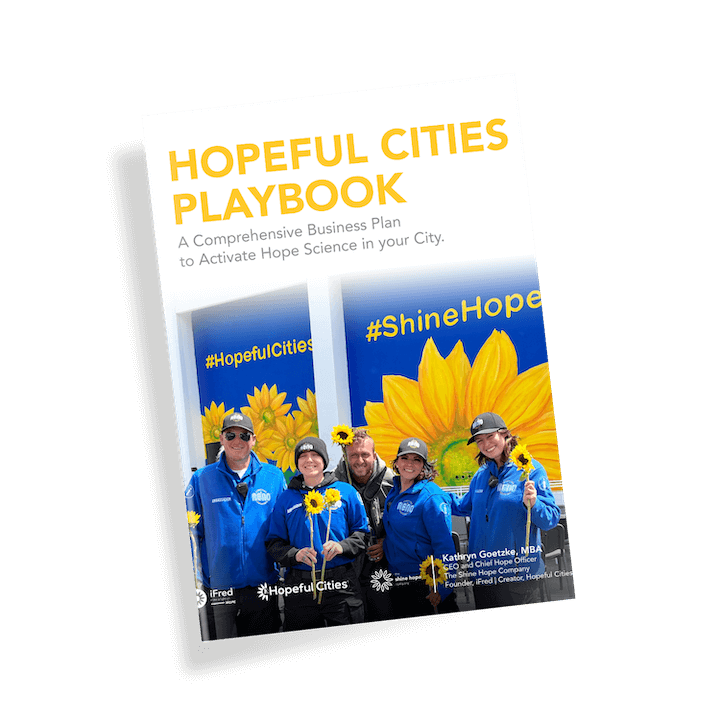Hopelessness is Affecting Your City
Embracing a city-wide approach to Hope is pivotal because everyone encounters moments of hopelessness.
Every. Single. Citizen. How so?
Hopelessness is characterized by emotional despair (sadness, anger, fear)
and motivational helplessness (a sense of powerlessness).
We all experience these moments. They can surface in seemingly minor situations like being stuck in traffic, facing job rejections, or dealing with technology glitches. Yet, these seemingly small instances can spiral into larger issues when compounded by events such as job loss, financial turmoil, or relationship breakdowns.
On a grander scale, systemic oppression, violence, and global crises, like climate change, also contribute to a collective, persistent sense of hopelessness, which can impact the overall functioning and safety of an individual and a city.
Hopelessness impacts everyone, so rather than eradicating hopelessness, we must teach all ‘how’ to manage these moments of hopelessness to prevent persistent hopelessness. We must normalize them, instead of shaming people for experiencing them, and ensuring all know how and where to get support.

The consequences of unmanaged hopelessness are far-reaching and alarming; hopelessness is linked to:
- Increased recidivism: More than 50% of people released from prison return within a year; hopelessness leads to substance use, lack of desire to treat mental health problems, and interpersonal conflicts, which ultimately leads to recidivism (Benecchi, 2021; Dodd, 2016)
- Increased violence: The only known predictor of gun violence is a history of violent behavior, and researchers have found hopelessness is the only consistent predictor of violent behaviors (APA, 2013; Demetropoulos, 2017). In 2019, there were 250,227 gun-related deaths worldwide (World Population Review, 2019).
- Increased susceptibility to mental health disorders: Anxiety and depression are connected to feelings of hopelessness, with depression standing as the primary cause of disability globally, which results in an annual cost of $1 trillion to the global economy (Chodavadia et al., 2023; WHO, 2023).
- Increased risk of homelessness: Nearly 154 million people in the world are homeless, and depression is a precursor of homelessness for both men and women (Kuo, 2019; Moschion & Ours, 2022).
- Increased suicide: Across the world, suicide is one of the leading causes of death (WHO, 2021).
- Increased health problems: Health-related outcomes related to hopelessness include unintentional injury, chronic conditions (e.g., cancer, cardiovascular disease, hypertension), higher risk of comorbid conditions, poorer prognosis, and chronic pain (de Faria et al., 2020; Everson et al., 1996; Katon, 2011)
- Increased Substance Use: The world has seen a 26% rise in substance use in the past decade, and hopelessness is directly linked to the use of all substances (Kuo et al., 2004; UNODC, 2022).

Traditionally, society tends to react only when crises peak, neglecting the early signs. However, a shift to a proactive approach is imperative. Equipping everyone with an understanding of hopelessness enables them to recognize its signs and acquire skills to pivot toward Hope. This proactive stance is a potent preventive measure against the larger negative repercussions associated with unmanaged hopelessness.
Our strategy, encapsulated in the Hopeful Cities Playbook, adopts a holistic approach. It aims to educate and empower every individual within a city using a shared language centered around Hope. Leaders and citizens will work together to learn the same skills and support each other in the process.
